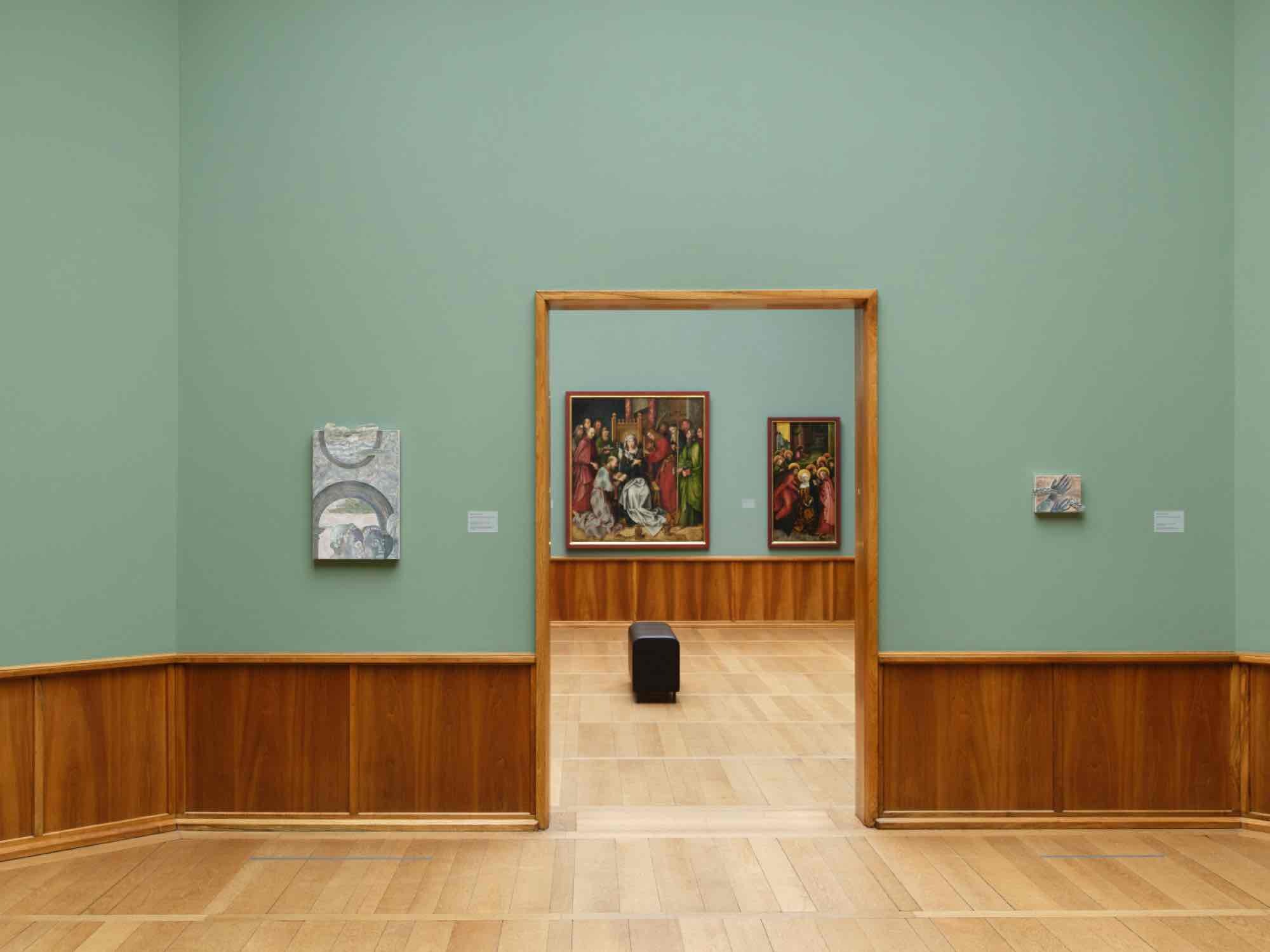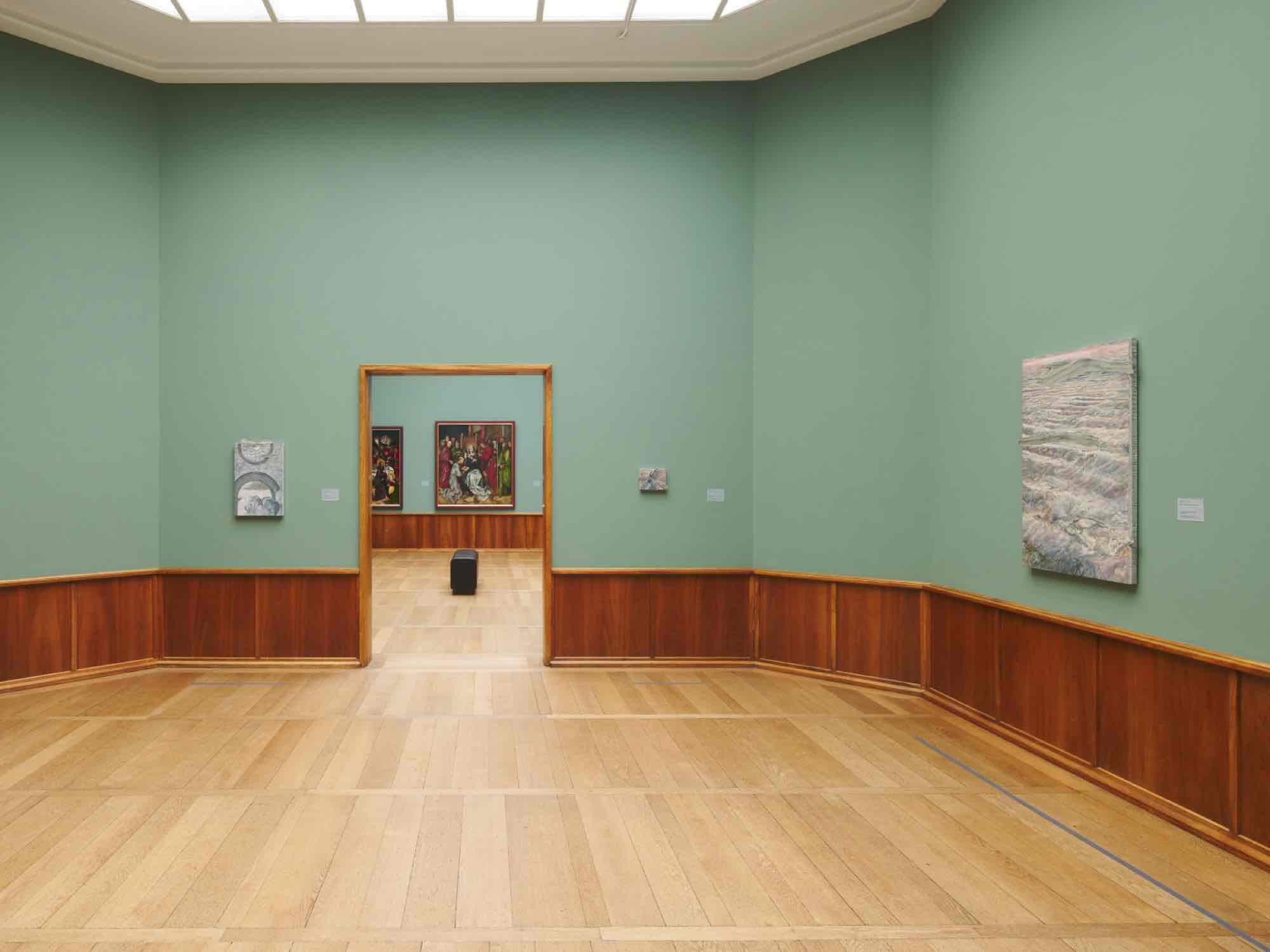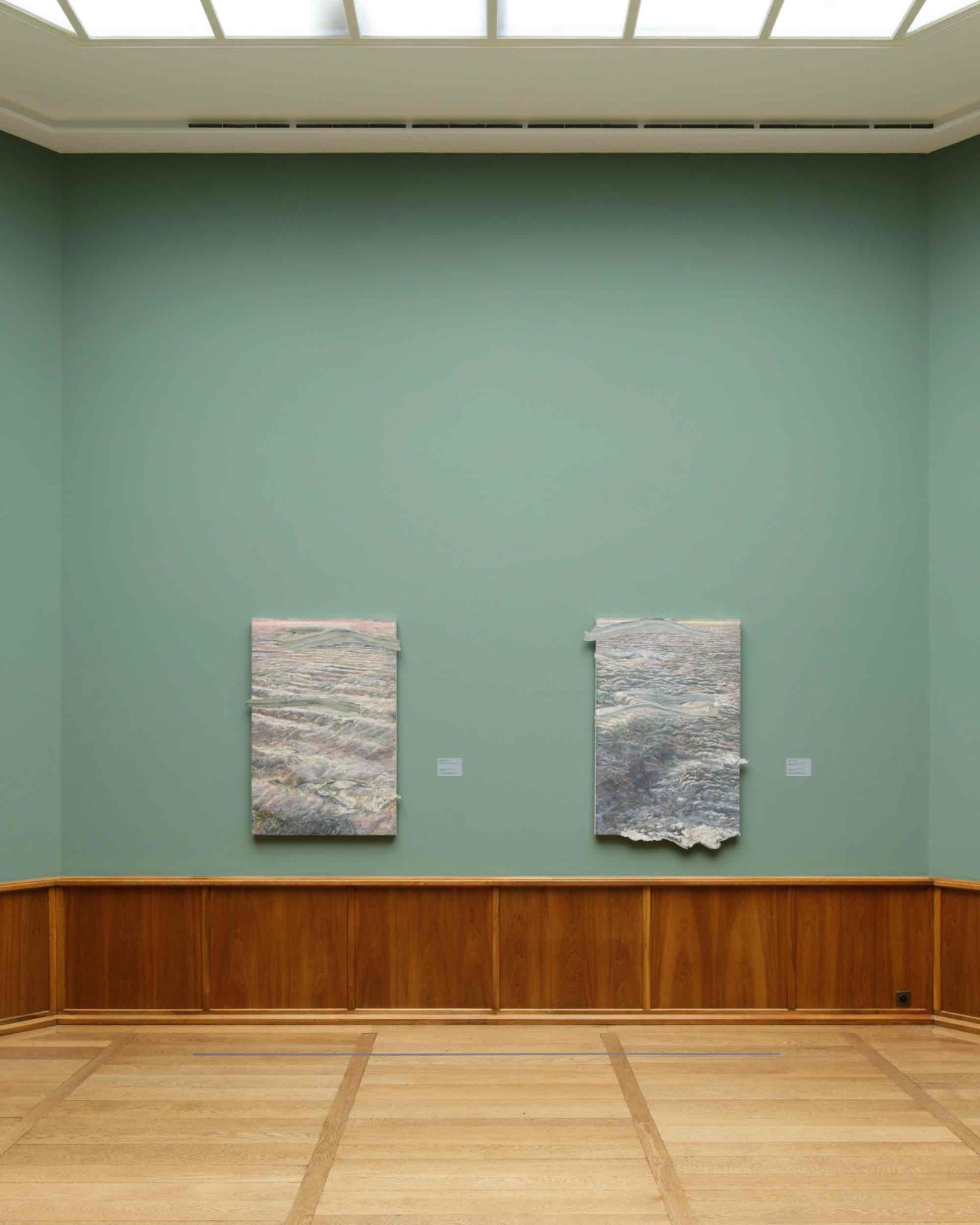Anri Sala
In the Midst of Old Masters
30 Apr - 15 Sep 2024

Anri Sala, In the Midst of Old Masters, exhibition view at Kunstmuseum Basel. Photo Credit: Max Ehrengruber

Anri Sala, In the Midst of Old Masters, exhibition view at Kunstmuseum Basel. Photo Credit: Max Ehrengruber

Anri Sala, In the Midst of Old Masters, exhibition view at Kunstmuseum Basel. Photo Credit: Max Ehrengruber

Anri Sala, In the Midst of Old Masters, exhibition view at Kunstmuseum Basel. Photo Credit: Max Ehrengruber
Kunstmuseum Basel is presenting the latest work by artist Anri Sala (*1974, Tirana, Albania) in the Hauptbau in the midst of the Old Masters. Sala made the six frescoes in 2023, which were acquired by the Emanuel Hoffmann Foundation that same year. In them Sala revives the historical craft of al fresco painting, in relation to thoughts about temporality and narrative, themes that are crucial to his oeuvre.
The technique of fresco painting was refined to perfection by the Italian masters of the Early and High Renaissance, above all by Ghirlandaio, Raphael and Michelangelo. Anri Sala already took an interest in fresco painting while still studying in his native Tirana. He has always been fascinated by the limited timeframe of the technique, especially as it relates to his time-based media work.
A fresco is completed in sections known as a “giornata,” since each section must be completed within a single day, which requires extremely careful planning. The work consists of two main steps: first, the work is drawn in outline on a layer of damp plaster known as “arriccio,” and then another thin layer of plaster, the “intonaco,” is applied for the painting itself. The pigments can only be applied as long as the plaster is still damp, enabling pigment and plaster to bond in the process of drying. Change is no longer possible after the surface has dried.
Two of the six frescoes on view in the Kunstmuseum belong to the series Legenda Aurea Inversa. Sala’s title refers to an artwork of gigantic proportions: The Legend of the True Cross, a mid-15th century cycle painted by Piero della Francesca in the Basilica of San Francesco in Arezzo. This important fresco serves as his point of departure: he selects sections, focusing on them as if with the viewfinder of a camera, and then significantly modifies them. In both pictures, he reverses the colors like a photographic negative. “I prepare in advance what the negative of the image would have been if Piero della Francesca’s fresco had been a color photograph.”
The four remaining frescoes are from the series Surface to Air. There, the layering typical of fresco painting is particularly conspicuous. The works are based on photographs of clouds that Sala took from an airplane. He specifies the mood of the lighting by indicating the time of day in subtitles such as Morning or Afternoon.
Sala has integrated marble elements into both series, either protruding from the picture plane or fitting in perfectly. Their function is twofold: on one hand, they extend the painting and on the other, they are a hinged between different times inasmuch as they complete missing sections, such as those found in historical wall paintings. “There is suddenly this dimension of time which interests me a lot, when the inserted fragments of marble represent what might have been the missing parts of an old fresco.”
The frescoes could be read as returning to extending Anri Sala’s reflections on temporality and narrative. Both themes feature prominently both in these new works as well as his large-scale video and sound installations.
The Emanuel Hoffmann Foundation has taken an interest in Anri Sala’s art since first acquiring work by him in 2004. The frescoes from the series Legenda Aurea Inversa and Surface to Air were acquired in 2023. In addition to the six frescoes, the Foundation holds four drawings and three large video and sound installations.
Curator: Bodo Brinkmann
The technique of fresco painting was refined to perfection by the Italian masters of the Early and High Renaissance, above all by Ghirlandaio, Raphael and Michelangelo. Anri Sala already took an interest in fresco painting while still studying in his native Tirana. He has always been fascinated by the limited timeframe of the technique, especially as it relates to his time-based media work.
A fresco is completed in sections known as a “giornata,” since each section must be completed within a single day, which requires extremely careful planning. The work consists of two main steps: first, the work is drawn in outline on a layer of damp plaster known as “arriccio,” and then another thin layer of plaster, the “intonaco,” is applied for the painting itself. The pigments can only be applied as long as the plaster is still damp, enabling pigment and plaster to bond in the process of drying. Change is no longer possible after the surface has dried.
Two of the six frescoes on view in the Kunstmuseum belong to the series Legenda Aurea Inversa. Sala’s title refers to an artwork of gigantic proportions: The Legend of the True Cross, a mid-15th century cycle painted by Piero della Francesca in the Basilica of San Francesco in Arezzo. This important fresco serves as his point of departure: he selects sections, focusing on them as if with the viewfinder of a camera, and then significantly modifies them. In both pictures, he reverses the colors like a photographic negative. “I prepare in advance what the negative of the image would have been if Piero della Francesca’s fresco had been a color photograph.”
The four remaining frescoes are from the series Surface to Air. There, the layering typical of fresco painting is particularly conspicuous. The works are based on photographs of clouds that Sala took from an airplane. He specifies the mood of the lighting by indicating the time of day in subtitles such as Morning or Afternoon.
Sala has integrated marble elements into both series, either protruding from the picture plane or fitting in perfectly. Their function is twofold: on one hand, they extend the painting and on the other, they are a hinged between different times inasmuch as they complete missing sections, such as those found in historical wall paintings. “There is suddenly this dimension of time which interests me a lot, when the inserted fragments of marble represent what might have been the missing parts of an old fresco.”
The frescoes could be read as returning to extending Anri Sala’s reflections on temporality and narrative. Both themes feature prominently both in these new works as well as his large-scale video and sound installations.
The Emanuel Hoffmann Foundation has taken an interest in Anri Sala’s art since first acquiring work by him in 2004. The frescoes from the series Legenda Aurea Inversa and Surface to Air were acquired in 2023. In addition to the six frescoes, the Foundation holds four drawings and three large video and sound installations.
Curator: Bodo Brinkmann
